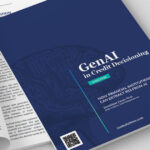Mobile & Millennials (or M&M’s)
We recently attended the CBA Live Conference in Dallas and the Retail Banking Conference in Florida, and two major themes were prevalent throughout the conference sessions: mobile and millennials.
Mobile banking is on the rise, and fewer consumers are walking into brick and mortar branches for their banking needs. Especially the younger generation. According to Luvleen Sidhu, Co-Founder and Chief Strategy Officer at BankMobile, millennials walk into a bank 1-2 times per year. However, they interact via mobile banking 20-30 times per month.
Whether it be mobile account opening, mobile check deposits, checking account balances or transferring funds via phone or tablet, people are relying more and more on mobile devices to complete these daily banking tasks. And, millennials are leading the charge; according to a 2016 study, “[a]doption of mobile is strongest among Millennials, with 82% of those under 35 having made a mobile payment, and 37% having made a mobile P2P payment.”[i]
Millennials are the largest age segment in the country today. There is a myth that they are not interested in traditional loan or credit offerings. This is simply not true. In reality, they are being turned down when they request traditional credit or loans, most typically because they are underbanked or have thin files.
Once rejected, a millennial will not go back to the same source to request traditional credit for at least one year according to Kevin King, Director, Product Marketing at ID Analytics. This is the chicken or the egg concept in true life form. How then are millennials supposed to build and establish credit if they are being denied?
Retail banks should and need to embrace millennials, and this common theme resurfaced throughout both recent conferences. Although they may be currently struggling with student debt and lower incomes than the generation before them, when their parents (the baby boomer generation) pass on, they will be leaving their fortunes to the millennials. Those inheritors, in turn, will need to invest – and they will more readily work with banks that have been able to establish a good relationship.
According to a 2016 report from PricewaterhouseCoopers and the George Washington University’s Global Financial Literacy Excellence Center, a mere 27 percent of millennials seek help from a financial professional, even though they admit knowing little about finance. To win that business and keep those new customers longer, retail banks need to start the relationship now and not be afraid of working with millennials.
Getting to Yes (And Keeping Customers Afterwards)
So what is a bank to do, when faced with a potential customer that has sky-high expectations for service, demands mobile accessibility and has thin to no credit history? Two approaches stand out: alternative data acquisition to determine creditworthiness, and prequalification.
Alternative Data for Underbanked Consumers
Thin files represent risk. And, the truth is that there are a lot of thin files out there. According to the Consumer Financial Protection Bureau, “[T]here are 45 million consumers who may be denied access to credit because they do not have credit records that can be scored.”[ii]
But with the right information, banks can mitigate risk by getting a more complete picture of the financial health of a prospect. If bureau reports are not giving a bank enough information, having real-time access to data from non-traditional sources, whether FCRA-compliant alternative data or non-FCRA regulated, can make the difference between no and yes.
If you are looking to factor alternative data into your decisioning, make sure you partner with a company that has the ability to quickly and seamlessly fold that into your rules and processes. A data agnostic platform like Zoot can help you transform data to decisions quickly, while helping minimize your risk exposure.
Prequalification
Banks can also put those millennials in the driver’s seat by putting viable offers in front of them with no negative impact to their credit. Many card issuers offer prequalification services on their websites that entail completing a short form that typically requires full name, address, date of birth, and the last four digits of a social security number. Some ask the type of card benefit the consumer would prefer, how they would rate their credit, or if they are already an online banking customer.
With this information, banks are poised to make soft credit inquiries that put only the offers for which the applicants qualify on the table. The process is process is easy, quick and returns real-time results tailored to the individual. Zoot’s prequalification solution can help banks ease some of the headaches millennials might typically associate with applying for credit.
No Single Answer
As millennials and mobile accessibility continue to influence the financial markets, there isn’t a single approach that will solve all the challenges facing retail banks. But with access to the right kinds of data and a powerful prequalification strategy, banks can begin to capitalize on the opportunities that millennials represent.
Zoot is at the forefront of the decisioning and data analysis solutions that allow lenders to remain nimble and profitable in the face of changing consumer trends. Our services allow our retail bank clients to remain agile and profitable while adjusting to the changing needs and wants of the consumer. Our origination solution automates the manual processes in legacy systems, allows for automated, straight-through processing of high volumes of credit applications, and enables reduced processing times to help win applicants.
[i] Fox, M., Causey, E., & Cencula, D. (2016, August) Study of Mobile Banking & Payments: First Annapolis Consulting.
[ii] CFPB. “Who Are the Credit Invisibles? How to Help People with Limited Credit Histories.” (2016): Consumer Financial Protection Bureau. 12 Dec. 2016. Web.





